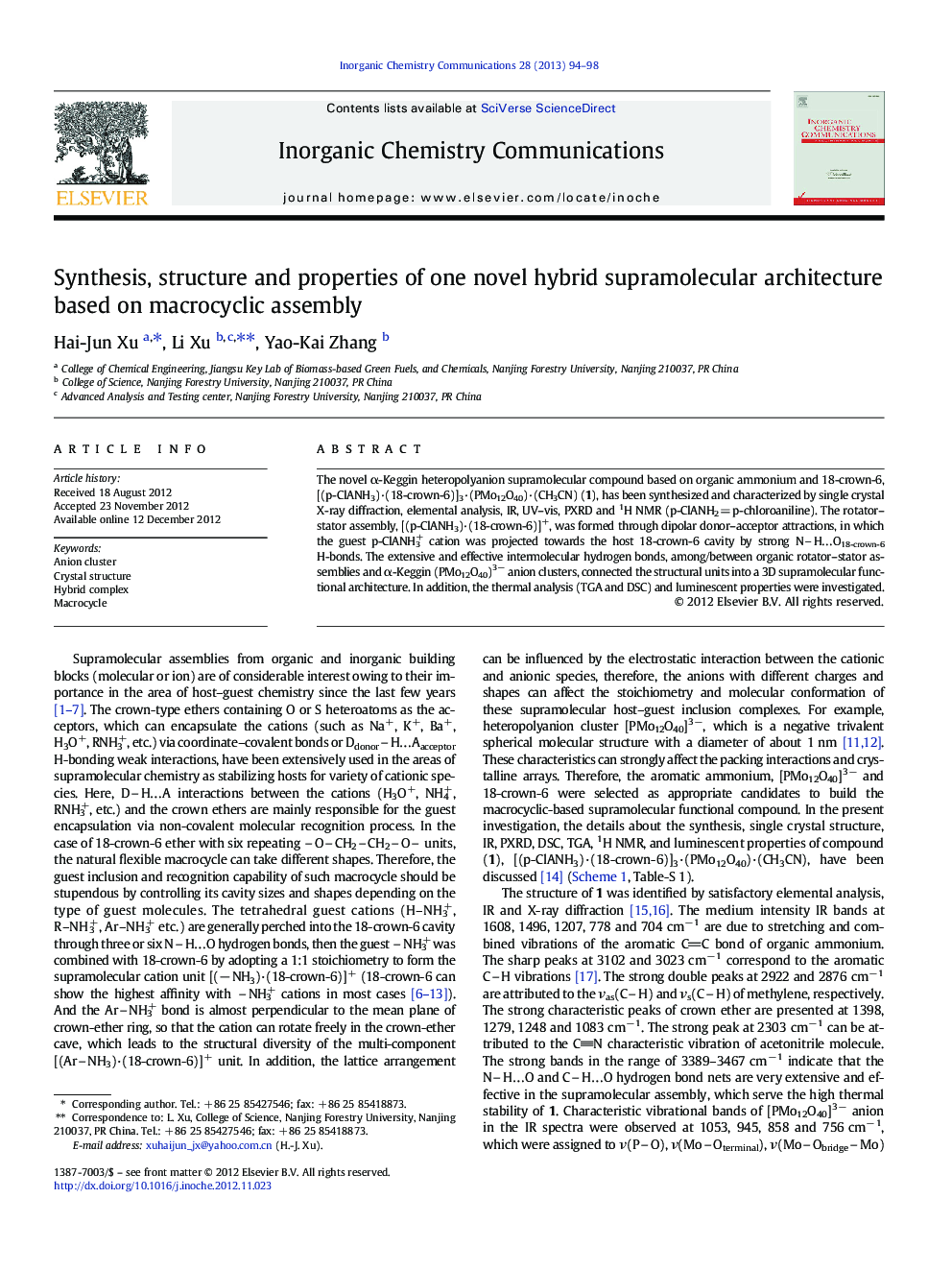| کد مقاله | کد نشریه | سال انتشار | مقاله انگلیسی | نسخه تمام متن |
|---|---|---|---|---|
| 1302035 | 1498962 | 2013 | 5 صفحه PDF | دانلود رایگان |

The novel α-Keggin heteropolyanion supramolecular compound based on organic ammonium and 18-crown-6, [(p-ClANH3)·(18-crown-6)]3·(PMo12O40)·(CH3CN) (1), has been synthesized and characterized by single crystal X-ray diffraction, elemental analysis, IR, UV–vis, PXRD and 1H NMR (p-ClANH2 = p-chloroaniline). The rotator–stator assembly, [(p-ClANH3)·(18-crown-6)]+, was formed through dipolar donor–acceptor attractions, in which the guest p-ClANH3+ cation was projected towards the host 18-crown-6 cavity by strong NH…O18-crown-6 H-bonds. The extensive and effective intermolecular hydrogen bonds, among/between organic rotator–stator assemblies and α-Keggin (PMo12O40)3 − anion clusters, connected the structural units into a 3D supramolecular functional architecture. In addition, the thermal analysis (TGA and DSC) and luminescent properties were investigated.
The rotator–stator assembly, [(p-ClANH3)·(18-crown-6)]+, was formed through dipolar donor–acceptor attractions, in which the guest p-ClANH3+ cation was projected towards host 18-crown-6 cavity by strong NH…O18-crown-6 H-bonds. The extensive and effective intermolecular hydrogen bonds, among/between organic rotator–stator assemblies and α-Keggin (PMo12O40)3 − anion clusters, connected the structural units into a 3D supramolecular functional architecture.Figure optionsDownload as PowerPoint slideHighlights
► Macrocyclic cation assembly was formed through dipolar donor-accepter attractions.
► Guest cation was projected towards the host 18-crown-6 cavity by strong H-bonds.
► Cation and anion clusters were connected into a 3D supramolecular architecture.
Journal: Inorganic Chemistry Communications - Volume 28, February 2013, Pages 94–98